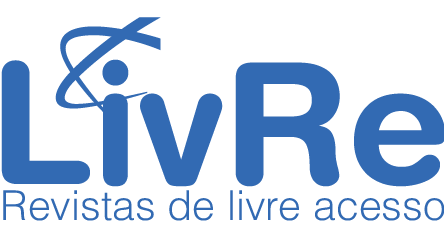ACCESSIBILITY ASSESSMENT IN A MULTIFAMILY RESIDENTIAL BUILDING
A CASE STUDY
Abstract
This paper aims to assess the accessibility conditions of a vertical multifamily building, with the goal of generating discussions on the subject. The methodology is divided into two main phases: 1) planning and execution; and 2) diagnosis and recommendations, comprising a set of methodological procedures. An accessibility checklist was employed as the evaluation tool. The case study focuses on a building whose project was approved before the enforcement of NBR 9050 and the Brazilian Law for Inclusion (Law No. 13.146/2015), which establish mandatory accessibility standards for common areas in residential buildings. The results revealed several inadequacies related to physical access, communication, and signage. The findings suggest the need for an architectural intervention to make the building an accessible environment.
Downloads
References
ASSOCIAÇÃO BRASILEIRA DE NORMAS TÉCNICAS. NBR 9.050: Acessibilidade de pessoas portadoras
de deficiências a edificações, espaço, mobiliário e equipamentos urbanos. Rio de Janeiro: ABNT, 2020.
BARBOSA, M.; TOLEDO, A.; Análise da acessibilidade nas áreas comuns de edifícios residenciais verticais
com pilotis elevado, p. 55-66. In: 1º Congresso Internacional de Ergonomia Aplicada [=Blucher Engineering
Proceedings, v.3 n.3]. São Paulo: Blucher, 2016.
BERNARDI, N. et al. O desenho universal no processo de projeto. In: Doris C.C.K.Kowaltowski, Daniel de
Carvalho Moreira, João R.D.Petreche, Mário M. Fabricio (Orgs.). O processo do projeto em arquitetura. São
Paulo: Oficina de textos, 2011.
BINS ELY, V. H. M., DISCHINGER, M., MATTOS, M. L. Sistemas de Informação Ambiental – Elementos
Indispensáveis para Acessibilidade e Orientabilidade. Anais do ABERGO 2002 – VI Congresso LatinoAmericano de Ergonomia e XII Congresso Brasileiro de Ergonomia. Recife, 2002.
BRASIL. Lei n° 10.098, de 19 de dezembro de 2000. Estabelece normas gerais e critérios básicos para a
promoção da acessibilidade das pessoas portadoras de deficiência ou com mobilidade reduzida, e dá outras
providências. Diário Oficial [da] República Federativa do Brasil. Brasília, DF.
BRASIL. Lei nº 13.146, de 6 de julho de 2015. Institui a Lei Brasileira de Inclusão da Pessoa com Deficiência
(Estatuto da Pessoa com Deficiência). Diário Oficial [da] República Federativa do Brasil. Brasília, DF.
CASTRO, E. Acessibilidade Arquitetônica: conheça o método eficiente para aplicar a acessibilidade em
seus projetos e obras / Eduardo Ronchetti de Castro. 1 ed. São Paulo: Acessibilidade Aplicada, 2022.
DISCHINGER, Marta; BINS ELY, Vera Helena Moro; PIARDI, Sonia Maria Demeda Groisman. Promovendo
acessibilidade espacial nos edifícios públicos: Programa de Acessibilidade às Pessoas com Deficiência
ou Mobilidade Reduzida nas Edificações de Uso Público. Florianópolis: MPSC, 2012.
DORNELES, V. et al. Ensino de desenho universal em cursos de arquitetura e urbanismo no Brasil. In:
Cláudia Mont’Alvão e Vilma Villarouco (Orgs.). Um novo olhar para o projeto: a ergonomia no ambiente
construído – Recife: Editora UFPE, 2014. 247p.
RECIFE. LEI n° 16.292, de 29 de Janeiro de 1997. Regula as atividades de Edificações e Instalações, no
município do Recife, e dá outras providências. Diário Oficial do Município do Recife. Recife, 31 de Jan. e 01
de Fev.1997.
VOORDT, T. J.M Van der; WEGEN, H. B. R. Van. Architecture in Use: An Introduction to the Programming,
Design and Evaluation of Buildings. United Kingdon: Elsevier, 2005.
Downloads
Published
How to Cite
Section
License
Copyright (c) 2024 Vinicius Fulgêncio, Marcella Farias

This work is licensed under a Creative Commons Attribution-NonCommercial-NoDerivatives 4.0 International License.
Authors who publish in this journal agree to the following terms:
1. Authors retain the copyright and grant the journal the right of first publication, with the article simultaneously licensed under the Creative Commons Attribution License BY NC ND, which allows the sharing of article with acknowledgment of authorship and initial publication in this journal;
2. Authors are authorized to take additional contracts separately, for non-exclusive distribution of version of the article published in this journal (e.g. publish in institutional repository or as a book chapter), with acknowledgment of authorship and initial publication in this journal;
3. Authors are allowed and encouraged to publish and distribute their research work online (e.g. in institutional repositories or on their personal page) once the editorial process has been completed, as this can generate productive changes, as well as increase the impact and the citation of published article (See The Effect of Open Access);
4. It is not recommended to publish and distribute the article before its publication, as this may interfere with its blind peer review.


